Hollywood Athletic Club, Sunset Boulevard
With the exception of Paramount Studios all of the big studios have moved out of Hollywood leaving it a mix of tourist attractions and rather run down LA suburb. Sadly, Sunset Boulevard now fits into the latter category with little evidence of its former opulence and movie history. However, one landmark has been restored to its former splendour. The Hollywood Athletic Club was built in 1924, designed by the architects responsible for Grauman’s Chinese Theatre. It was a private men’s club founded by stars such as Charlie Chaplin, Cecil B. DeMille, and Rudolph Valentino. It was here that Johnny Weismuller trained in the pool for his "Tarzan" films. At the time of writing, the building was not open to the public, but could be rented for private parties and movie filming.
Hollywood sign from Gower Street outside Paramount Studios
A boom town has an insatiable demand for houses and Hollywood was no exception. In 1923 a giant sign was erected on the side of Mount Lee to advertise an upmarket housing development called Hollywoodland. It was made up of giant letters spelling out the name and illuminated by 4,000 light bulbs. The sign was only intended to stand for a short time, but in true American fashion it was left to rot for 26 years until the letter H collapsed. In 1949 it was renovated and the letters spelling LAND were removed. This picture of the most famous sign in Tinseltown was taken from outside Paramount Studios, the only studio still operating in Hollywood.
Grauman's (Mann's) Chinese Theatre
Even though it is not the place where the Academy Award (Oscar) ceremony is held, this is the theatre to which tourists flock. Sid Grauman was a showman who had built other theatres in LA, but his dream was a sumptuous theatre with a Chinese theme. Complete with artefacts imported from China, the theatre cost $2 million to build. Grauman’s Chinese Theatre opened on Hollywood Boulevard in May 1927 with the premier of Cecil B. DeMille's movie “The King of Kings”. In 1973 the theatre was acquired by Mann Theatres and was renamed Mann’s Chinese Theatre. Following the bankruptcy of Mann Theatres in 2001, the consortium that acquired it restored the original name.
Hollywood
By the 1870s the area north of Los Angeles was a community of agricultural Ranchos. In the 1880s many of the Ranchos were sub-divided including in 1886 Rancho La Brea, part of which was bought by H. H. Wilcox and christened "Hollywood" by his wife. Wilcox drew up plans for a new community on his land, with Prospect Avenue (now Hollywood Boulevard) as the main street. He sold residential lots to wealthy Midwesterners to build their winter homes. The Nestor Company opened the first film studio in Hollywood in 1911 and by 1912 at least 15 studios were in operation. Famous directors such as Cecil B. DeMille and D. W. Griffith arrived to make the first Hollywood movies. By the 1920s and 1930s Hollywood had become a boomtown fuelled not by gold or silver but by celluloid.
Click on Minimap to navigate
Stricken Mammoth, La Brea Tar Pits
Away from the tourist glitz of Hollywood Boulevard, a part of Hollywood hides a doubly dark secret. On land that was once part of Rancho La Brea asphalt has seeped from the ground for tens of thousands of years. The asphalt forms sticky pools that are a deadly trap for animals of all sizes. In prehistoric times, mammoths, dire wolves, short-faced bears, ground sloths, and saber-toothed cats lost their lives after becoming trapped in the asphalt. They left behind in La Brea Tar Pits their well preserved bones as a memorial to their fate. This statue of a stricken Mammoth can be found in a tar pit in Hancock Park. Nearby, the Page Museum tells the story of the tar pits and displays many skeletons of animals recovered from them. Click Tab 2 to see Mammoth skeletons in the Page Museum.
Kodak Theatre, Hollywood Boulevard
The Kodak Theatre is a product of the 21st century rather than Hollywood’s heyday. It opened in November 2001 and is now the permanent home of the Academy Awards ceremony. While it is full of technical wizardry, the it lacks the presence of nearby Grauman’s Chinese Theatre. If you follow the Hollywood Walk of Fame embedded in the pavement (sidewalk) of Hollywood Boulevard you can easily miss the theatre. The name Kodak was dropped when Kodak filed for bankruptcy protection, so if you go to Hollywood now you will find that it is now called the Dolby Theatre.
Home > US States > The West > California > Los Angeles >
Star's signatures on paving slabs outside Grauman's (Mann's) Chinese Theatre
While Grauman’s Chinese Theatre is a fascinating building, many tourists come only to stare at the concrete paving slabs in front of the theatre. It is here that the hand and foot prints of the stars have been cast in concrete. A wander around the courtyard can take you through the history of Hollywood, but often the area is so crowded that reading the slabs can be impossible. This picture shows the slabs created by Marilyn Monroe, Colleen Moore and Joan Crawford. Were Colleen Moore’s hands and feet really that small?
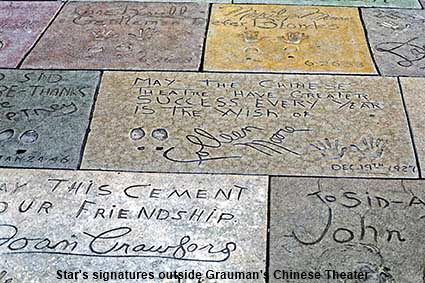
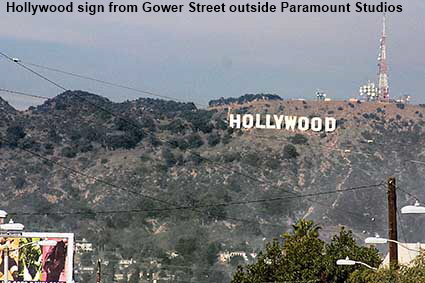
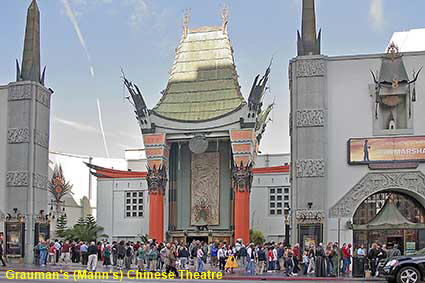
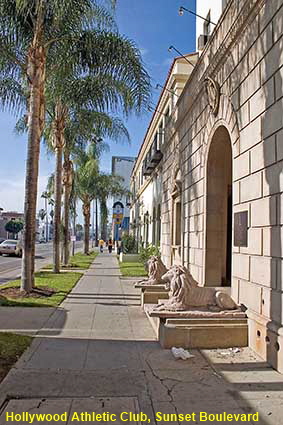

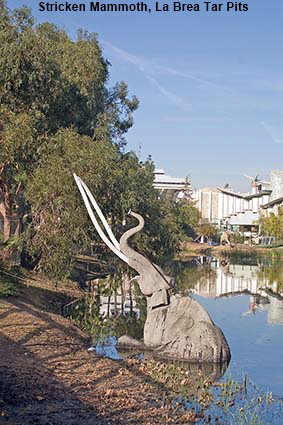


To move forwards or backwards through the Los Angeles trail click the arrows above, or select your next destination on the Minimap.
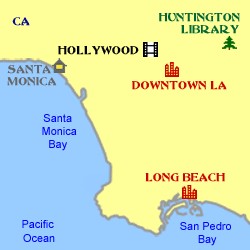
DLU070710

© Mike Elsden 1981 - 2025
The contents of this page may not be reproduced in full or in part without permission